March 20th, 2014
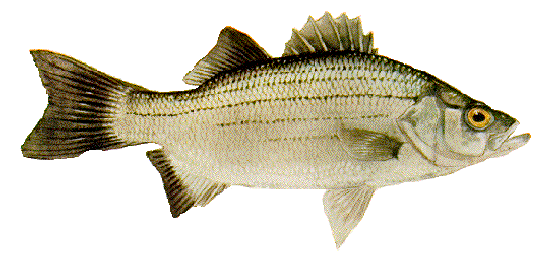
White Bass
This is Passport to Texas
In December and January, while we’re busy with the holidays and staying warm indoors, white bass begin to congregate where rivers and reservoirs meet.
06—And those fish are getting ready for those environmental cues to happen so they can actually all start migrating and running up river.
Environmental cues like changes in temperature and water flows. Marcos De Jesus is a fisheries biologist. When the time is right, white bass move up river to spawn, which is something anglers eagerly anticipate each year.
10—Some of them go up pretty far – as far as they can swim to complete their spawning run. So, they become congregated and create excitement for the anglers, because once they’re congregated they’re really fun to catch.
East and Central Texas offer many white bass fishing opportunities. De Jesus says while they’re active year round, springtime runs practically set up anglers for success.
27—As we get into the springtime, they congregate towards the mouth of the river waiting for those cues. Right when they’re at the mouth of the river, they’re easy to catch. But, the easiest time to catch them is when they’re running up river spawning in those shallow waters, because you can actually catch them from the bank.
Do these fish give you a good fight?
Definitely. They’re very great fighters. They become aggressive, and they take on many types of lures and live bait. Once they hook on – they’ll fight pretty hard.
How will the lingering drought affect this year’s white bass run? That’s tomorrow.
For Texas Parks and Wildlife, I’m Cecilia Nasti.
Posted in Fishing, Freshwater | Comments Off on Fishing: White Bass Run
March 19th, 2014
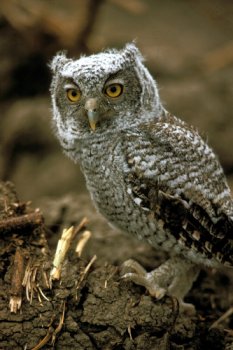
Eastern Screech Owl, Image TPWD
This is Passport to Texas
Wildlife viewing at night presents a challenge. I mean, it is dark, after all. Yet, some species become more vocal when the sun sets, and will “talk to you” and even come into view if you know how to speak their language. State park interpreter, Kelly Lauderdale, has a few tips for enticing wildlife to come out of the shadows.
There are apps you can download for free or for minimal cost – like Audubon Reptiles. I use it for my night hikes to play those calls and to identify those different calls. Visitors can easily use those themselves. And this is what I do on my hike: I play the call, and do it for a little while and see if anything answers.
If using a recorded call – animals might call back – but does that ever draw the animals to you? And if it does, what should you
do?
I have had success with calling in an eastern screech owl. So, I play the call, it answers back, and it comes in. If you’re lucky you may be able to see the full owl sitting up in the tree talking to you. In that case – enjoy it! Don’t shine your flashlight up and blind him or her. Just sit and listen and enjoy and then go on.
State parks frequently offer guided night hikes. Find one near you on the Texas Parks and Wildlife website.
For Texas Parks and Wildlife, I’m Cecilia Nasti.
Posted in Birding, State Parks | Comments Off on Recreation: Calling Critters at Night
March 18th, 2014
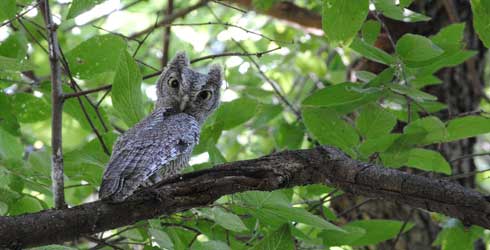
Eastern Screech Owl, image from Nature.org
This is Passport to Texas
Don’t let the dark keep you indoors. With a flashlight, friend, and a little daring, a night hike in a state park can be exhilarating.
05—One thing that’s really kind of fun, too, is to not use your flashlight.
Kelley Lauderdale is an interpretive specialist at Ray Roberts Lake State Park north of Denton. Among other things, she leads nighttime hikes called owl prowls.
18—If you let your eyes adjust to the dark and the moonlight, you’d be surprised at how well you can actually see. And sometimes when you do it that way, it really reveals a whole new wilderness. You see a lot more than when you get this tunnel vision with the flashlight and only see what’s illuminated.
Kelly recommends hiking with others on familiar trails, and to be prepared to experience wildlife by ear.
14—There are lots of amphibians that are active at night. And that’s one of the really fun things to listen for, because they’re pretty easy to hear. And oftentimes, once you learn to identify the sound of an amphibian, you’ll say: “Hey! That’s what I’ve been hearing all this time? I know that!”
Frogs and toads aren’t the only animals active at night.
14—There are owls that are active. Eastern screech owls are very nocturnal. Another bird that a lot of people hear at night is the Chuck Wills Widow; and they’ll sing and call all night long. Sometimes campers get a little bit tired of it if it’s really close to their campsite.
So step outside when the sun sets and get an earful of nature.
For Texas Parks and Wildlife, I’m Cecilia Nasti.
Posted in State Parks | Comments Off on Recreation: Night Hikes
March 17th, 2014
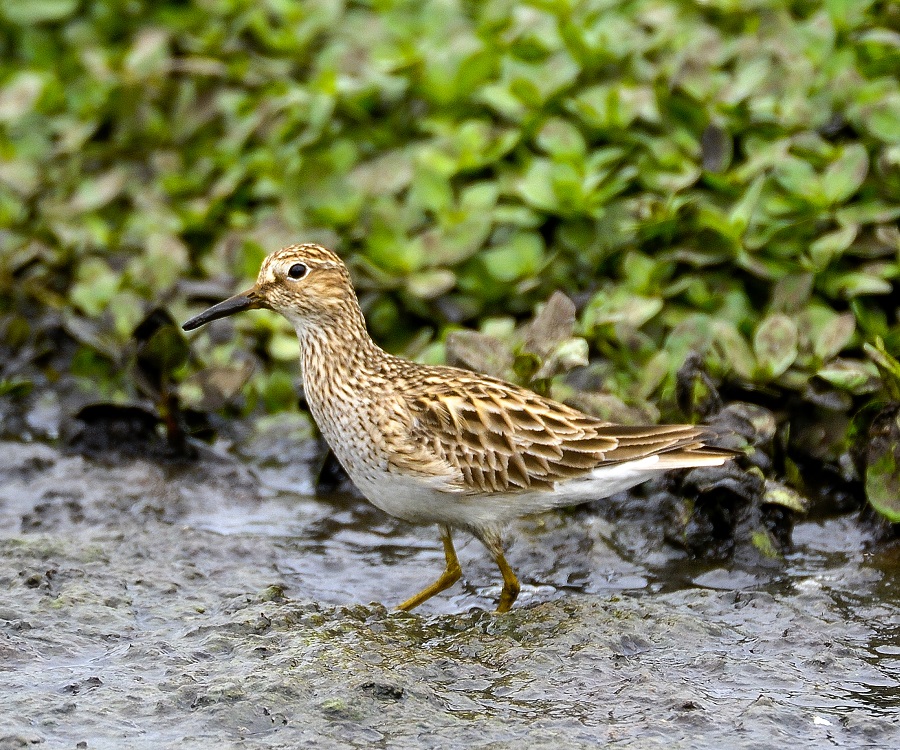
Hornsby Bend Visitor
This is Passport to Texas
On the second Saturday of every month, Eric Carpenter surveys birds with Travis Audubon, at Hornsby Bend, east of downtown Austin.
03—Hornsby is one of the better spots to bird in Central Texas.
Carpenter and cohorts have recorded more than 360 species of birds at the site over the years. Kevin Andersen runs the Center for Environmental Research at Hornsby; an unlikely place for the genteel activity of bird watching.
07—Hornsby Bend is the facility that recycles all of Austin’s sewage solids, which is a euphemism for poop.
Austin’s sewage and yard waste is recycled at this unique, 1200 acre site along 3.5 miles of the Colorado River.
09—There’s a farm and a bottomland forest, treatment ponds that are famous for birding. Many different things that we can use for environmental research.
Pathogens in the sludge are killed off naturally. Some solids, when mixed with recycled yard waste, become compost; the cleaned water goes into ponds, creating an environment attractive to wildlife and those who watch it — like photographer Greg Lasley.
16—Even though we’re right near the city of Austin, there’s an amazing variety of wildlife: butterflies, dragonflies, birds, reptiles and amphibians. My philosophy is if you just get out in nature and spend time looking, things show themselves to you.
See a segment about Hornsby Bend next week on the Texas Parks and Wildlife PBS TV series. Check your local listings.
For Texas Parks and Wildlife, I’m Cecilia Nasti.
Posted in TPWD TV | Comments Off on TPW TV: Natural Wasteland
March 14th, 2014
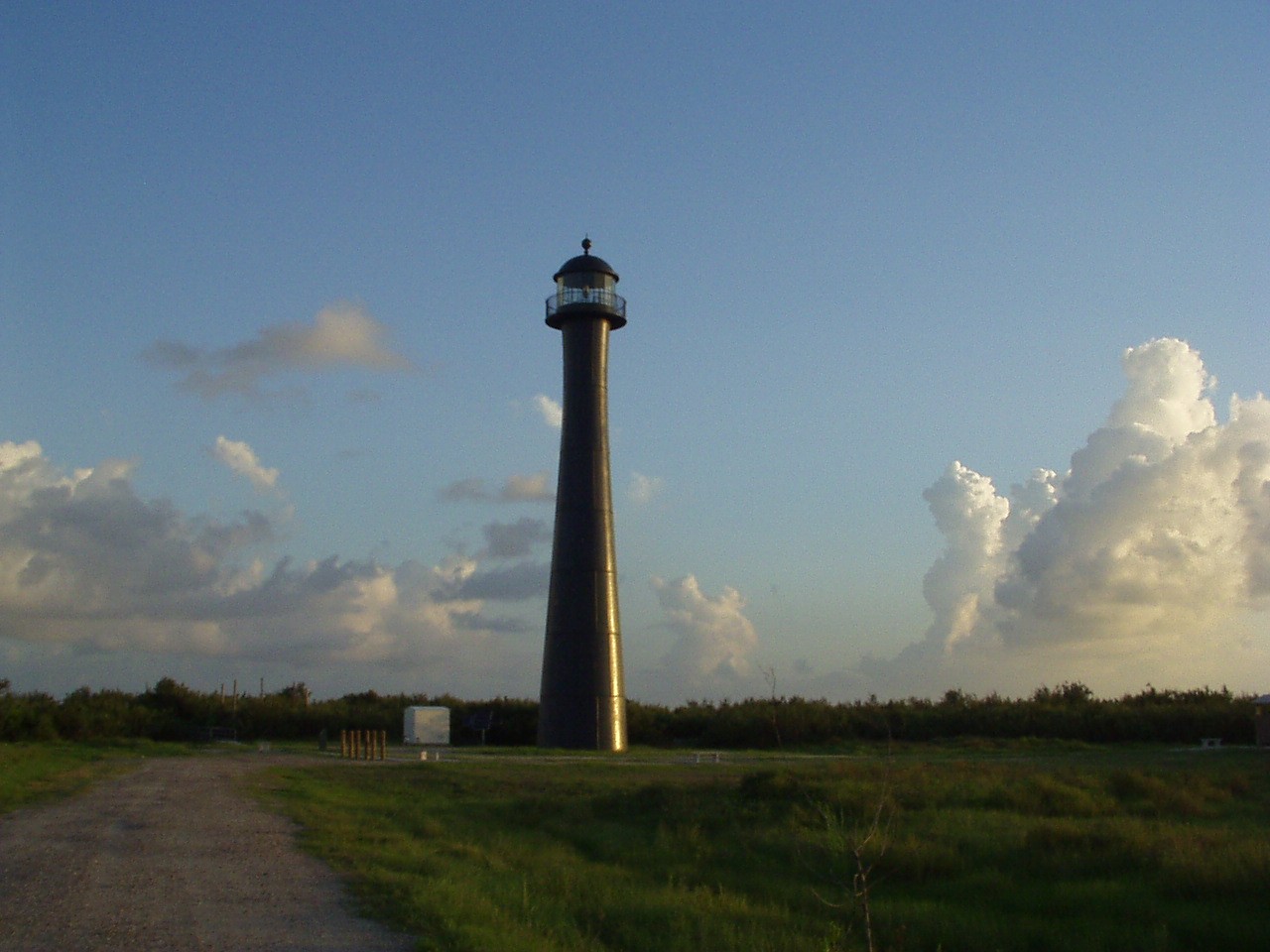
Matagorda Island Lighthouse at sunrise
[display_podcast]
This is Passport to Texas
Back in 1939, the Army decided to build a military base to protect the Texas coast during World War II. That base was located at Matagorda Island. But when it closed in 1977, many parts of the base remained…including the runways.
08—We have several runways, the longest one is 2 miles long. It was set up for B52s to do touch and goes.
And while Matagorda Island’s former park manager, John Stuart, says planes are no longer allowed to use the runways, other types of vehicles are making use of them.
05—Kids use the runways for bicycles and skateboards… we get quite a few.
Cyclists are not the only users of the runways, so you need to be careful when sharing the area.
09—We get least terns nesting on the runway, and that would be a big fine if you went over one of those nests and cracked one of some endangered bird eggs.
Matagorda Island is just one of the many unique places where you can ride your bicycle.
Want to ride on a former railroad track or on a trail where dinosaurs once roamed? Visit the Texas Parks and Wildlife website and find a free on-line brochure on bicycling in state parks.
That’s our show for today. For Texas Parks and Wildlife, I’m Cecilia Nasti.
Posted in State Parks | Comments Off on Recreation: Runway Turned Bike Trail







 Passport to Texas is a
Passport to Texas is a  Passport to Texas is made available by:
Passport to Texas is made available by: